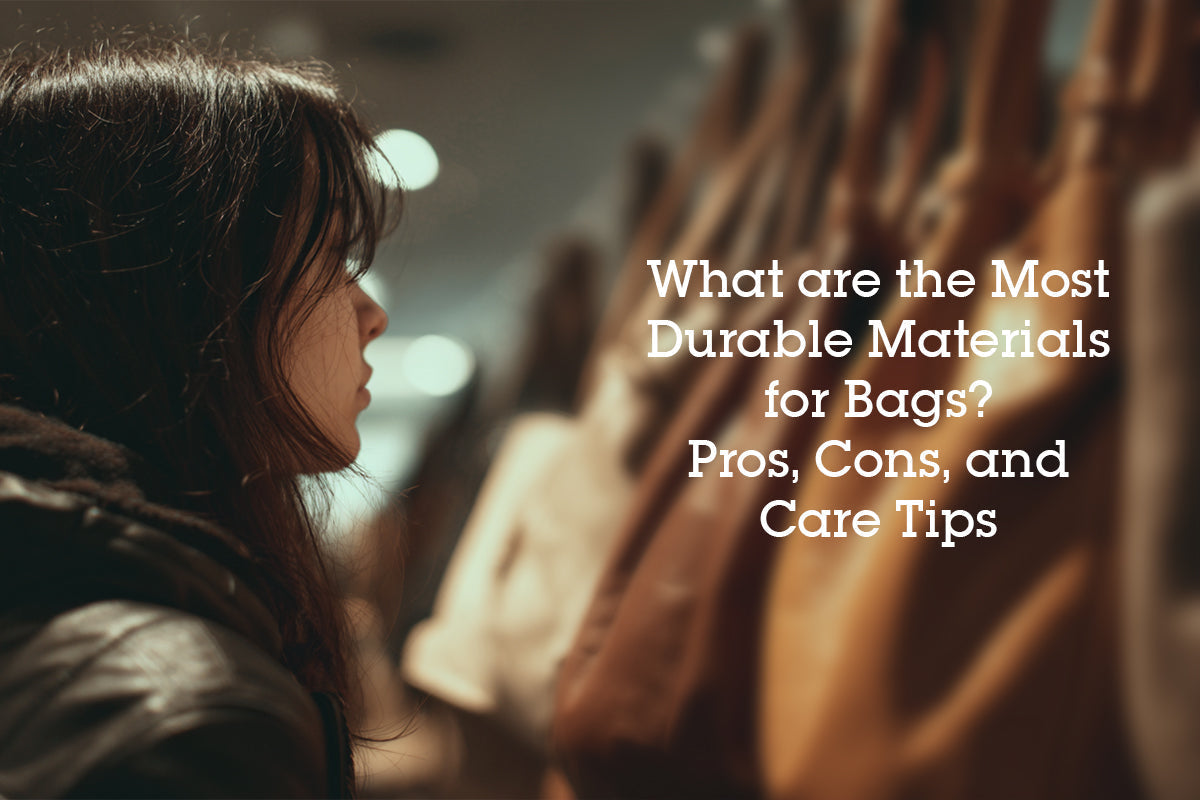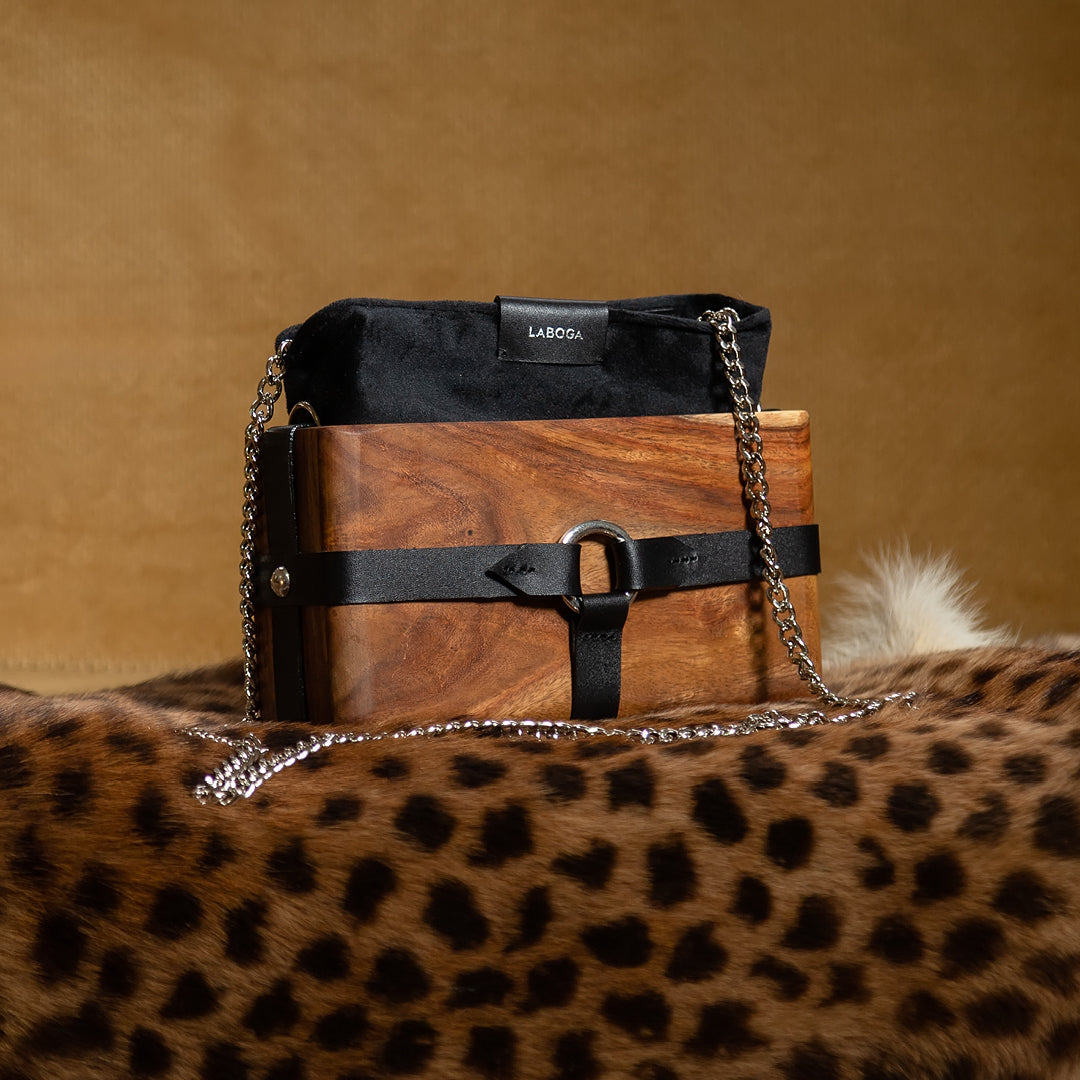Durability matters a lot when choosing a bag, whether it’s a daily tote, a hiking backpack, or a professional briefcase. The right material can be the difference between a bag that lasts for years and one that falls apart after just a season. People want something stylish, but investing in durability means looking beyond surface appearance into the science of hides, fabrics, and modern synthetics.
Not all materials are created equal. Some bags look indestructible but don’t hold up to real-world use. Others age beautifully. Each has unique pros and cons, and knowing how to care for them can add extra years to your investment.
Genuine Leather: Legendary Longevity
Nothing says longevity quite like genuine leather. Used for centuries, from rugged travel trunks to modern handbags, leather combines toughness with a classic aesthetic.
Pros of Leather:
- Ages gracefully, developing a rich patina over time
- Naturally resistant to water and abrasion (especially with proper tanning)
- Can handle heavy loads without stretching
- Timeless look that doesn’t go out of style
Cons of Leather:
- Typically expensive
- Vulnerable to stains, scratches, and prolonged water exposure
- Sensitive to heat and sun, which can dry and crack the surface
- Requires regular maintenance
Tips for Leather Bag Care:
- Keep leather away from direct sunlight and high heat.
- Apply conditioner every few months to keep it supple.
- Store in breathable dust bags when not in use.
- Clean stains gently with a damp cloth; avoid harsh soaps or detergents.
- Use a waterproofing spray periodically to fend off moisture.
Some leathers, like full-grain, are especially durable, while softer types (such as lambskin) require more careful handling. Here's a quick table summarizing the main leather varieties:
|
Leather Type |
Durability |
Feel |
Maintenance Level |
|---|---|---|---|
|
Full-Grain |
Excellent |
Firm, rugged |
Medium |
|
Top-Grain |
Very Good |
Smooth, softer |
Medium |
|
Genuine Leather |
Good |
Variable |
Low-Medium |
|
Suede/Nubuck |
Moderate |
Velvety, soft |
High |
Canvas: Classic Utility
Canvas, a heavy-duty woven fabric made from cotton, hemp, or synthetics, is a favorite for school bags, totes, and outdoor gear. Its roots lie in sails and tents, speaking volumes about its resilience.
Pros of Canvas:
- Holds up to heavy use and weights
- Generally more affordable than leather
- Easy to dye and print (variety of colors/patterns)
- Washable (depending on treatments or blends)
- Often lightweight
Cons of Canvas:
- Prone to staining, absorbs water unless treated
- Can fade or shrink after washing
- Attracts dust and dirt
- Less formal than leather
Tips for Canvas Bag Care:
- Spot-clean stains with mild soap and lukewarm water.
- Air-dry thoroughly; don’t use a dryer.
- Store in a cool, dry place to prevent mildew.
- Use fabric protectant spray to help resist stains and moisture.
Heavier canvas weaves offer greater durability, and modern blends with synthetic fibers can further improve longevity and resistance to the elements.
Nylon: Modern Marvel
Nylon is a synthetic powerhouse. Born from the innovations of the 20th century, it’s now the default choice for backpacks, luggage, and technical daypacks.
Pros of Nylon:
- Exceptionally tough against rips and abrasion
- Lightweight and water-resistant
- Dries quickly
- Holds color well
- Usually affordable
Cons of Nylon:
- Can appear less luxurious or formal
- UV exposure can make it brittle over time
- Melts under high heat
- Synthetics can build up odors if not cleaned regularly
Tips for Nylon Bag Care:
- Wipe clean with a damp cloth and mild soap.
- For bigger messes, use gentle machine washing (check tags first).
- Air-dry only; avoid direct sun to prevent UV breakdown.
- Treat with specialized fabric sprays for extra water resistance.
Not all nylon is equal. Denier rating (e.g., 420D, 1000D) measures thickness; higher numbers usually mean greater toughness. Variants like ballistic nylon are especially revered for their durability.
Polyester: Everyday Versatility
Often confused with nylon, polyester holds its own as a reliable bag material. Found in everything from gym duffels to kids’ backpacks, polyester balances cost, color, and usability.
Pros of Polyester:
- Holds color superbly; resists fading
- Resilient to wrinkles and shrinking
- Quick-drying
- Budget-friendly
Cons of Polyester:
- Less abrasion-resistant than high-denier nylon
- Can pill over time
- Doesn’t age as gracefully as canvas or leather
Tips for Polyester Bag Care:
- Clean with a mixture of warm water and gentle detergent.
- Rinse thoroughly—soap can degrade fibers if left to sit.
- To restore shape or smoothness, iron on a low setting with a cloth barrier.
Polyester’s advantage is in routine use: for students, gym-goers, and travelers, its weather resistance and low price point are major pluses.
Synthetic Blends and Technical Fabrics
Blends combine strengths. For technical bags, hybrid fabrics merge nylon, polyester, PVC, polyurethane, or even Kevlar. These bags meet specific needs—waterproofing, puncture resistance, or ultra-lightweight performance.
Popular technical fabrics include:
- Ballistic nylon: Developed for military use, very resistant to tears and abrasion
- Ripstop nylon/polyester: Reinforced with a grid-like structure to prevent tears from spreading
- TPU-coated fabrics: Deliver exceptional waterproofing for cycling or marine bags
Care advice varies by blend but, as a rule, always check manufacturer instructions first. These fabrics are engineered for performance and usually don’t need as much pampering as leather or untreated cotton canvas.
Comparing Durability: Material Showdown
Selecting the right material comes down to use-case, lifestyle, and taste. Here’s a concise comparison:
|
Material |
Water Resistance |
Abrasion Resistance |
Lifespan (with care) |
Suitable For |
|---|---|---|---|---|
|
Leather |
Moderate |
High |
Decades |
Formal, luxury, daily |
|
Canvas |
Low-Moderate |
Moderate |
5-10 years |
Casual, outdoors |
|
Nylon |
High |
Very High |
5-15 years |
Travel, backpacks |
|
Polyester |
Good |
Moderate |
3-7 years |
Everyday |
|
Technical Fabrics |
Excellent |
Excellent |
10+ years |
Outdoor, pro |
Each material shines in different scenarios. Leather outperforms for heirloom-worthy accessories. Nylon and technical blends go the distance for rough travel and unpredictable weather. Canvas is a go-to for easy-going style and utility.
Care Tips to Keep Any Bag Going Longer
Bag maintenance doesn’t need to be a chore. A handful of habits can double or triple the lifespan of even an affordable bag.
- Empty bags after use to prevent strain and odor build-up
- Store upright with filler (like bubble wrap or paper) to maintain shape
- Keep away from extreme temperatures or humidity
- Clean spills or stains promptly
- Rotate bags if possible, giving each a chance to air and rest
By pairing smart material selection with basic care, bags aren’t just gear—they’re personal classics, ready to stand up to years of real-world adventures.
Finding the right material is as much about how you live as how you look. With so many choices designed to suit every budget and style, it’s easier than ever to select a bag that’s both beautiful and built to last. Whether gravitating toward the timeworn polish of leather, the rugged practicality of nylon, or the casual comfort of canvas, there’s a strong, reliable companion out there for every taste and need.





